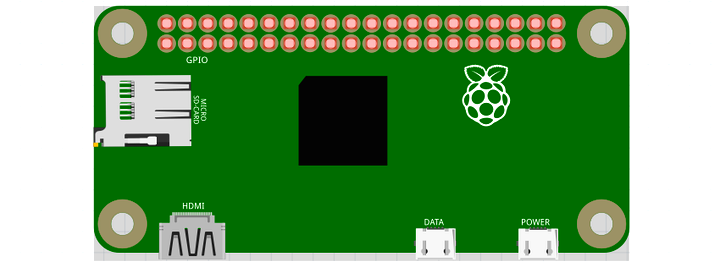This is the base Nerves System configuration for the Raspberry Pi Zero and Raspberry Pi Zero W.
If you are not interested in Gadget Mode it might be worth checking out nerves_system_rpi. That image configures the USB port in host mode by default and is probably more appropriate for your setup.
| Feature | Description |
|---|---|
| CPU | 1 GHz ARM1176JZF-S |
| Memory | 512 MB |
| Storage | MicroSD |
| Linux kernel | 4.4 w/ Raspberry Pi patches |
| IEx terminal | OTG USB serial port (ttyGS0). Can be changed to HDMI or UART. |
| GPIO, I2C, SPI | Yes - Elixir ALE |
| ADC | No |
| PWM | Yes, but no Elixir support |
| UART | 1 available - ttyAMA0 |
| Camera | Yes - via rpi-userland |
| Ethernet | Yes - via OTG USB port |
| WiFi | Supported on the Pi Zero W |
| Bluetooth | Not supported yet |
The base image activates the dwc2 overlay, which allows the Pi Zero to appear as a
device (aka gadget mode). When plugged into a host computer via the OTG port, the Pi
Zero will appear as a composite Ethernet and serial device. The virtual serial
port provides access to the IEx prompt and the Ethernet device can be used for
firmware updates, Erlang distribution, and anything else running over IP.
The base image includes drivers for the onboard Raspberry Pi Zero W wifi module
(brcmfmac driver). Due to the USB port being placed in gadget mode, this
system does not support USB WiFi adapters.
There's a subtle coupling between the nerves_system_br version and the Linux
kernel version used here. nerves_system_br provides the versions of
rpi-userland and rpi-firmware that get installed. I prefer to match them to
the Linux kernel to avoid any issues. Unfortunately, none of these are tagged
by the Raspberry Pi Foundation so I either attempt to match what's in Raspbian
or take versions of the repositories that have similar commit times.
If you're new to Nerves, check out the nerves_init_gadget project for creating a starter project for the Raspberry Pi Zero or Zero W. It will get you started with the basics like bringing up the virtual Ethernet interface, initializing the application partition, and enabling ssh-based firmware updates.
Image credit: This image is from the Fritzing parts library.

